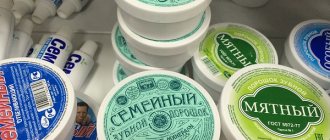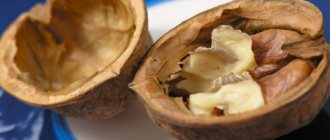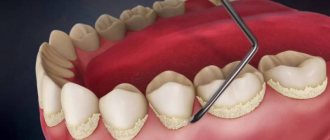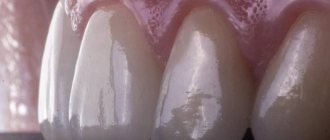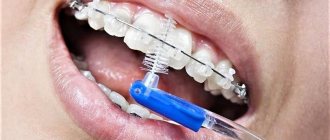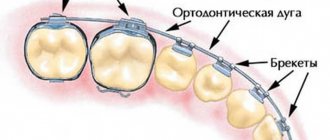Not everything that goes into your mouth is healthy
How often, trustingly, without thinking, we buy food and household items lying freely on store shelves! How safe are they for our health?
Business tycoons in the food and household goods industry are endlessly coming up with different marketing tactics to increase their sales. Usually this is an attractive, aesthetic packaging, and, well, a very small print of the ingredients. And so it is everywhere. It is necessary to be on guard at all times when choosing goods. Advertising does its job, although everyone knows that advertising usually greatly exaggerates and lies.
With chewing gum, everything is clear; in the advertisement there is a handsome, smiling young man and a promise that you will have the same radiant smile and fresh breath. But why would I need all this if regular use of your product could cause me problems that are much more complicated?
Why am I so worried, you ask, because everyone lives like this and nothing? Nobody seems to be dying out from this. Well, somewhere, some acquaintance fell ill and soon died. Yes, now there is such an environment, and besides, there is a pandemic, this is understandable.
How to strengthen the enamel layer at home
Many of the methods that your doctor will suggest to you can be used at home.
Products that promote recovery
This includes all fermented milk products (cheese, cottage cheese, kefir), egg yolks, cereals, citrus fruits, seafood and nuts. The benefit lies in the increased content of calcium, fluoride, vitamins C, D and E. Products that strengthen tooth enamel should be given a significant share in the daily diet. It is worth minimizing sweets, coffee, carbonated drinks (they negatively affect the composition of saliva). Hard fruits and vegetables are also useful because they help mechanically clean teeth. It is also recommended to drink a lot of water so that saliva is produced in sufficient quantities and the mouth does not dry out.
These are universal tips that will not only help stop the destruction of enamel, but will also be useful for the entire body as a whole.
Teeth are the “gate” of our body
As they say, if you have healthy teeth, then there should be no problems with digestion, unless you abuse anything. Let's take toothpastes, their composition, both domestic and foreign, contains a lot of things that are incomprehensible to the common person, we had to figure it out.
Many pastes contain extracts of beneficial herbs and microelements, but with all this wonderful set there is one or more “buts” - “a barrel of honey with a fly in the ointment.” I have nothing against tar soap or tar in general, tar is a necessary and useful thing, but this is so, by the way.
If you are interested, you can look at the composition of your toothpaste yourself; there is information available on the Internet for each component, and you will understand that beautiful packaging does not always correspond to the contents. Let's see what we have in there? And there is a continuous “barrel of tar”! And we, without a doubt, put this in our mouths every day and believe that we are taking proper care of our teeth! Therefore, I choose for myself natural tooth powder, prepared with my own hands. But first, for a general idea, let’s take a look at the pages of the medical textbook.
Our health begins with the oral cavity, where the digestive process begins. Many glands and vessels are hidden behind the mucous membrane of the oral cavity, and it is very important that we chew, because through this mucous membrane harmful substances penetrate the bloodstream and are carried throughout the body. Not all of them are easily excreted by the excretory system, but usually accumulate in the liver, kidneys and other organs.
Get ready, now a little anatomy. Let's consider a small segment - the sublingual salivary gland and everything will become clear to us.
The arteries supplying the sublingual salivary gland are: sublingual and mental. The venous drainage goes into the hypoglossal vein (see 31).
The sublingual vein is located under the mucous membrane of the lower surface of the tongue, through which it is clearly visible. The hypoglossal vein joins the lingual vein (see 28), which drains into the internal jugular vein (see 21).
Let’s stop here and everything is clear.
Composition of the enamel layer
It contains hydroxyapatite crystals (97%), water (2–3%) and organic substances (1–2%). The condition of this hard tissue does not remain unchanged throughout life. The thickness of the enamel is approximately 0.01 mm (in the cervical area) and 2 mm (on the chewing surface). The process of loss, that is, leaching, of beneficial minerals (in particular, calcium and fluorine) is called demineralization. Because of it, the strength of the teeth is reduced and the integrity of the teeth is compromised.
We will discuss the question of how to restore and strengthen tooth enamel at home further. Remember that the first visible changes begin with the appearance of white spots, and later they turn into carious cavities.
Natural Ayurvedic oral hygiene products
How I searched on the Internet for useful oral hygiene products, and how I found what I was looking for in an online store with natural Ayurvedic products from India at fairly reasonable prices, read the article “Mahabazar online store, review. Dabur Red Toothpaste, Dabur Red Tooth Powder and Miswak.” Perhaps my experience will be useful to you too. But store-bought products tend to run out, so I didn’t stop and began looking for a natural remedy that I could prepare myself. There are many recipes, but the ingredients are expensive and it is impossible to prepare, but my task is to find something that is not only healthy, but also easy to prepare.
Advantages and disadvantages of tooth powders
The benefits of tooth powder have been known for many years. Centuries ago, the Romans used a certain form of tooth powder made from many types of burnt herbs. They also ground animal bones, shells and hooves to make a powder used to clean teeth.
Although there are many benefits of herbal powder, many dentists claim that such powders are abrasive and can cause harm to a person's teeth. Some experts believe that the powder destroys tooth enamel, and this problem cannot be corrected. For this reason, it is important that a person consult a dentist beforehand and discuss their decision to use an herbal tooth powder, whether homemade or store-bought.
When choosing a tooth powder, study the packaging; it must comply with GOST.
To prevent any complications, consultation with a dentist is strongly recommended before use. Moscow metro station Zvezdnaya, Danube Avenue, 23
How is tooth powder better than toothpaste?
And finally, my search was crowned with success! A simple and healthy recipe for natural tooth powder , which you can prepare with your own hands, and see the cost for yourself! What is the advantage of this natural tooth powder over toothpaste?
Why is natural tooth powder made by yourself better? Because there is no liquid in it, unlike toothpastes, but more importantly, it contains absolutely no thickeners, emulsifiers, harmful aerosols, PEGs, SLS, artificial flavors. The result is an environmentally friendly product with a more effective formula and less waste. Such tooth powder will cost you “mere pennies.”
Some of my favorite toothpaste recipes today:
Teeth whitening with activated carbon
DIY toothpaste and the benefits of saliva
How to make toothpaste from baking soda
Oil pulling for dental health
I was wondering if healing tooth powder would work and I couldn't make it work better. It's easier to make than toothpaste, and you can use ground herbs and spices instead of essential oils, which saves money.
Natural tooth powder recipe
We will prepare our own natural tooth powder from dry ginger powder, soda and finely ground salt.
Composition of natural tooth powder at home:
- 1 tsp. ground dry ginger (sold at the market in the “Spices” section);
- 1 tsp. baking soda;
- 1 tsp. any fine salt, preferably sea or Himalayan. If you have a large one, you can grind it in a coffee grinder.
Mix the ingredients for preparing tooth powder in a small, clean, shallow jar with a wide mouth. That's it, your DIY oral care tooth powder is ready!
Apply this composition to a dampened toothbrush and you can brush your teeth. Just clean it correctly: no horizontal movements, only vertical ones, slowly. Cleaned it thoroughly.
If you have time and desire, you can massage your gums with your fingers:
How to massage your gums? This is simply done with your fingers.
Using a clean finger, massage all gums in a circular motion with light pressure for two minutes. While massaging your gums, you should feel a pleasantly burning taste, which means that capillary blood circulation in your gums is already improving.
Do not spit out the saliva, you should have a mouth full of saliva and begin to rinse your mouth with this saline solution for a minute and spit it out. After this, do not rinse your teeth or eat for about 10 minutes. This is how you massage your gums with your fingers.
Natural tooth powder prepared at home should be stored in a tightly sealed container at room temperature. Over time, baking soda may lose its quality due to moisture, so you should not pick up toothpowder with a wet toothbrush. Place a small spoon in the jar, preferably made of food-grade plastic.
The feeling after brushing your teeth is a pleasant warmth and, as our naturopaths promise:
The infection will disappear, the roots of the teeth will become stronger, the thyroid gland will become healthier and nourished, the blood will be cleansed, because soda will enter the blood, bypassing the stomach, directly through the sublingual vein it will cleanse the blood along with ginger and sea salt, which contains more than 70 useful microelements.
DIY natural ginger tooth powder is the perfect oral care!
A small addition for lovers of essential oils: you can put just 1 drop of a non-aggressive essential oil, such as you have at home, on a toothbrush with tooth powder, I used orange. It's important not to overdo it. And combine, a day with oil, a day without oil.
I regularly brush my teeth with this natural powder, prepared by myself, alternating it with Dabur powder, and to this day I have no complaints about it! Today, for me, homemade tooth powder is the best oral care product. I am confident in its composition and highly recommend it!
We made such a simple and healthy tooth powder with our own hands!
What products do you use to improve the health of your teeth? Write in the comments and share your recipe for natural toothpaste or powder!
Subscribe to the newsletter and if you liked the article, share it on social networks! Thank you for your attention to my humble resource!
LYUBODAR – a portal for self-knowledge and development
HOW OFTEN DO YOU BRUSH YOUR TEETH? Most likely once or twice a day. How often have you thought about what substances are in the toothpaste that you use day after day, month after month?
Almost all modern large manufacturers of toothpastes, with the support of “scientists,” claim that the content of dangerous components therein is “within normal limits.” By throwing 2-4 mg of toothpaste into ourselves every day, we receive a wide range of harmful substances that the body does not have time to eliminate. Because of this, all substances, whether we like it or not, accumulate in our body.
WHAT DO TOOTH PASTES CONTAIN?
The vast majority of toothpastes contain FLUORIDE!
FLUORIDE is a neurotoxin. Accumulates in tissues and bones for years. Causes neuro-disorders similar to Alzheimer's syndrome, harms the digestive system and joints, and weakens the immune system (especially in young people).
Symptoms of fluoride intoxication are similar to colds - chronic fatigue, muscle weakness, inability to regain strength after rest.
Here is a short video about fluoride:
Read more information about the components of toothpastes and how they affect health and spiritual development here:
Nowadays, shampoo without SODIUM LAURYLSULPHATE is very often advertised. But in toothpaste this substance is used in large quantities to improve foaming!
This substance is unusually active, quickly penetrates the skin and mucous membrane and accumulates in the internal organs: liver, kidneys, heart, brain!
Sodium lauryl sulfate dries out the mucous membrane of the mouth, increases the sensitivity of the gums to food acids, and is a strong abrasive - this leads to thinning of the enamel!
Recent studies have shown that sodium lauryl sulfate has a negative effect on fertility in men.
By the way, in industry, sodium lauryl sulfate is used for cleaning floors in garages, as a car wash, etc.
Another advertising bait is ANTI-BACTERIAL ADDITIVES. The most commonly used additive is triclosan, which kills microorganisms in the oral cavity. Naturally, both harmful bacteria and completely peaceful and beneficial microflora fall under the hot hand.
These substances are especially DANGEROUS FOR CHILDREN, as children often swallow toothpaste! Make your own “toothpaste”, it’s very easy!
The toothpaste you personally prepare will give its “natural” results. After all, Nature itself, with its ingredients, can help human teeth. Essential oils contained in homemade toothpastes will help both teeth and the person in general.
NETTLE TOOTH POWDER is an excellent cleaning and healing agent.
Nettle tooth powder is prepared from leaves, flowers, seeds and roots. You just need to collect nettle leaves three times a season. The first collection is in the spring, as soon as the first nettle appears - in May. There is even a day according to the lunar calendar for the best collection of nettles. Spring nettle is vitamins for your teeth, gums and the whole body. During flowering (nettle blooms for several days!) - second harvest of nettles. And the third - when mature, but still green, seeds appear on the nettle. It is worth collecting leaves along with flowers and seeds. Dry everything in a dark place. Grind and grind in a coffee grinder.
To make chopping easier, you must first remove all the branches, even small ones, since they contain strong spinning fibers. To prevent caries and gum inflammation, it is enough to use this nettle tooth powder once every one to two weeks.
If you are not too lazy, you can also add ground nettle roots. They will give the composition a yellow tint and an even more pleasant taste. Nettle tooth powder is good for treating bleeding gums due to the unique hemostatic and anti-inflammatory properties of the nettle plant.
You can easily make your own tooth powder. Let's list just some herbs for tooth powder: Nettle, cardamom, coriander, cloves, turmeric, cinnamon, ginger, dill seed, aspen bark, birch bark (neutral taste, we take more than 50% as a light component), pomegranate fruit bark (pleasant sour). bitter taste, in addition very useful properties), yarrow, black pepper, chamomile, thyme, echinacea, sage, bay leaf
First, you should dry everything thoroughly in some kind of dehydrator. Then grind it in a coffee grinder as finely as possible. Carefully ground dust from any herb will perfectly clean your teeth. To give the final mixture a noble taste, it is advisable to add some flavoring herbs such as stevia, mint and lemongrass to the final mixture.
Choose any plants and create pleasant-tasting mixtures. Try to experiment and get a mixture, natural tooth powder, that is not only pleasant and aromatic, but also beneficial for your gums and teeth.
A small recommendation for selecting herbs for tooth powder: Each person can choose an individual mixture of herbs according to the indications of their own diseases or to prevent them. Everything in a person is interconnected. Diseases of any organs affect the teeth. There is such a diagnostic method. Why then not brush your teeth with the very herb that can treat diseased organs?
And a few more recommendations. Whitening and rinsing solution. You can bleach and rinse with a solution of table salt and baking soda. The whole procedure should bring, first of all, joy. Baking soda almost immediately normalizes acidity. For information: baking soda with peroxide relieves the most advanced gum diseases in just two or three applications.
Let's remember what our ancestors used to brush their teeth before modern toothbrushes were invented. Ask older people and they will tell you amazing things:
It turns out that teeth were brushed with fresh herbs in the summer and dry herbs in the winter. They simply picked a blade of grass they liked and brushed their teeth with it. Imagine - our ancestors had a new “toothpaste” for every day. Teeth and gums received a full set of vitamins and microelements from Mother Nature herself. Even now, when modern people arrive in nature, they often pick off a stem and either brush their teeth with it or simply chew it.
You can brush your teeth with hard fruits and vegetables (apple, pear, carrot, parsley).
Our grandparents brushed their teeth with simple wood ash, coal, a clove of garlic, rock salt (or sea salt), clay, crushed eggshells, chalk, and crushed herbs. What a large and healthy diet our ancestors had! And the teeth were intact! And we wish you all strong teeth and healthy gums!
Chewing the resin of coniferous trees was the most favorite activity for children in childhood! Chewing honey in a comb (preferably log honey) is also an excellent teeth cleaner.
Try using powdered blue or white clay to brush your teeth. It is completely natural, does not contain harmful substances, effectively cleans teeth from plaque and prevents the appearance of tartar. Apply a small amount of clay to a damp toothbrush and brush your teeth as usual.
You can prepare herbal powder. Take in equal proportions: thyme, chamomile, bay, cloves, black pepper, cinnamon, turmeric and grind all the ingredients thoroughly and very finely. To clean your teeth, apply a small amount of powder to a damp toothbrush.
If you have gum inflammation, you can brush your teeth with powder made from sage leaves; it has a strong antimicrobial effect and a very pleasant taste. Sage powder is also applied to a damp brush.
Here are some recipes for natural tooth powders. Here are natural recipes for alternative toothpaste replacements. We suggest choosing the ones that suit you personally from the following options collected on the Internet:
Recipe 1: – nettle – calamus root – chamomile – calendula – birch buds – sage
Nettle gives vitamins to teeth and gums, enriches them, and relieves tooth sensitivity.
Calamus root strengthens gums, prevents tooth decay, relieves toothache, and relieves pain on sensitive tooth roots. Birch buds relieve toothache, strengthen teeth, are good for preventing caries, and also stop its development. Plus, it has a positive effect on the gums.
Chamomile protects teeth from caries, has an anti-inflammatory effect, narrows gum pockets, reduces bleeding gums, eliminates unpleasant odor, and reduces toothache.
Calendula is a means of preventing diseases of teeth and gums.
Sage is good for diseases of teeth and gums, relieves inflammation of the gums, and is useful for gum disease. Cloves can also soothe toothache. Rosemary – can improve blood circulation. Thyme - perfectly destroys bacteria that appear in the human oral cavity. Tea tree - will help get rid of caries and gum inflammation. Peppermint – perfectly removes inflammation and pain from caries, and can give freshness to a person’s breath.
Also, all these herbs clean teeth very well, remove plaque, and give freshness.
Recipe 2: just take stevia powder and brush your teeth with it. The result is excellent - no plaque, protection against caries. Children like this tooth powder, because stevia has a sweet taste, oddly enough, because it is a natural sugar substitute.
Recipe 3: – Black allspice; – Bay leaf (about 5-6 leaves); – Savory (I replaced it with thyme or thyme); - Carnation; – Turmeric (don’t be alarmed if your sink turns orange – Chamomile (one filter bag), can be replaced with mint
– Place all ingredients in a coffee grinder – Pour into a convenient container or mug – The powder is ready)
Recipe 4: – White clay. - Sea salt. - Chebrets. - Tansy. - Coltsfoot. - Mint. – Pine extract. - Black pepper. - Soda. - Lemon juice. - Cinnamon. - Carnation. Mix everything to your liking.
Recipe 5. Ingredients:
– a pinch of cinnamon, – a pinch of fennel (powder), – a pinch of salt (sea), – two spoons (teaspoons) of baking soda, – six drops of tea tree oil (you can add mint to the ingredients in the same amount), – one teaspoon of coconut oils
Cooking: 1. Combine all prepared ingredients (except coconut oil) - mix thoroughly. 2. Coconut oil should be added only immediately before each brushing of teeth - then the paste is considered ready for use. This paste contains no chemical fillers or substances harmful to the human body. In addition, toothpaste prepared in this way has a very pleasant aroma. It is recommended to store this toothpaste prepared at home in an airtight container.
Recipe 6. Ingredients:
– 70 grams of white clay, – one spoon (teaspoon) of honey, – two drops of sage essential oil, – two drops of chamomile essential oil, – five to ten drops of water-based propolis.
Prepare: 1. Mix clay with water until a paste is obtained. 2. Add propolis to the clay. 3. Take a teaspoon of honey, add two drops of selected essential oils into it. 4. Combine all components and mix thoroughly. 5. After preparing this paste, you can brush your teeth with peace of mind. Effect: – prepared toothpaste perfectly removes plaque and bad breath from a person’s mouth, in addition, it also has whitening properties.
Recipe 7. Ingredients:
– half a teaspoon of sea salt (it’s important to use only crushed salt), – two teaspoons of baking soda, – half a teaspoon of myrrh (powder) – you can replace it with bamboo powder or licorice, – half a teaspoon of white clay, – two spoons (tea) glycerin, - three to four mint leaves, essential oil, no matter what, rosemary, lemon, orange or sweet mint is recommended - from ten to thirteen drops. Cooking: 1. Mix all prepared ingredients thoroughly until smooth - the paste is ready. The prepared toothpaste must be stored in a hermetically sealed container (jar).
Some useful tips:
1. When using toothpaste prepared at home, you need to follow a few simple tips: – it is recommended to add baking soda, as an ingredient to the toothpaste, when washing only once a week; on other days you should brush your teeth without adding it. Frequent (daily) use of soda can only harm your teeth. According to dentists, the abrasive does whiten tooth enamel, but this happens only due to the fact that it is only able to clean the top layer of enamel. However, periodic use of such a procedure can also cause harm.
2. In order to whiten your teeth, it is recommended to rinse them with salt water. It is with the help of salt that the Greeks whiten their teeth.
3. Citric acid helps perfectly in whitening. It is important to remember that after rinsing your teeth with citric acid, it is not recommended to brush your teeth for one hour.
4. A person’s teeth, and he himself, will “feel” great if, after eating food, you chew a little clove or rinse your mouth with a decoction of oak bark or thyme.
Recipe 8. Ingredients: base – white clay, spring water, 1 tsp. honey, essential oil of sage, chamomile, water-based propolis.
How to do it: mix clay (about 60 g) with water and drop 5-10 drops of propolis, add two drops of sage and chamomile essential oils to a teaspoon of honey, mix with a toothpick and add to the clay.
Mix everything until smooth, put it in a jar and place it on the shelf in the bathroom. It will definitely last two or three weeks without spoiling. The paste tastes very soft with a neutral-sweet taste, whitens teeth and heals wounds in the mouth.
Recipe 9:
For those who like complexity, another recipe: galenic (herbal) powder. To prepare it you will need: cinquefoil powder – 2 parts, calamus powder – 2 parts and birch bark powder – 1 part. All the necessary ingredients can be found at the herbal pharmacy. Mix the components in the indicated proportions, dilute with a little warmed water until a thick, creamy consistency is obtained and use the prepared mixture as a toothpaste. You should not eat this paste for an hour after brushing your teeth.
Recipe 10:
For those who understand chemistry, wood ash is suitable. It contains potassium hydroxide, a compound that is an absorbent and an excellent bleaching agent. Dip a toothbrush into wood ash and brush your teeth. You can mix wood ash with toothpaste or powder.
Recipe 11:
Bake the eggplant (cut into small circles) in the oven or fry in a hot frying pan until charred. Dip your fingers into this black powder and rub them over your teeth for 3 minutes - the longer the better. This unattractive-looking powder not only whitens your teeth, but also perfectly strengthens them. It is advisable not to put anything in your mouth for an hour after this.
Don’t worry that your finger will remain dirty - eggplant “soot” is easily washed off with plain water. Naturally, preparing this remedy takes some time, so it is better to prepare it with a reserve for several times.
Recipe 12. Teeth whitening and treatment according to Neumyvakin.
It helps with almost any gum disease, and at the same time almost instantly whitens teeth, dissolves tartar, and heals small wounds in the mouth. Helps against periodontal disease, inflammation of the gums, blackness at the roots of the teeth, tartar and any painful condition in the mouth, as well as bad breath.
You need to make a simple paste: 0.5 tsp. baking soda, add 5-10 drops of hydrogen peroxide (pharmacy) and a few drops of lemon. The pasta is ready! An important nuance is that it is better to use finer ground soda rather than regular soda from the store; this can be ordered in online stores; we ordered American natural Baking Soda. It can be used constantly without damaging the enamel!
How to use:
Dip a cotton swab into the paste and rub the teeth and gums outside and inside with this paste. Lemon neutralizes soda and gives freshness, soda cleans teeth from plaque, and peroxide disinfects and whitens.
After such brushing, your teeth are so clean that they shine like pearls, and the light scent of lemon gives you a joyful mood.
You can rinse your mouth prophylactically with a solution of hydrogen peroxide:
1-3 tsp. peroxide in 50 ml of warm water for all painful conditions in the mouth. It's not tasty! But it is very useful... then the teeth whitening effect is consolidated, and they remain white, even if you no longer brush them with a cotton swab. But to consolidate the whitening effect, you need to do this REGULARLY!
Also, for those who decide to brush their teeth with a paste “according to Neumyvakin”, we advise you to remember - after brushing your teeth, do not rinse with anything for 15 minutes, do not eat or drink anything. Use a cotton swab to wipe off the remaining soda on your teeth, wipe your tongue with a dry cotton swab, and then “collect” everything with saliva and spit it out. Wash off the lips and around them externally with water. That's probably all.
A few recipes for simpler dental care products:
Remedy 1: thyme - dip a brush in finely ground dry leaves and brush your teeth with it. Disinfectant properties. Remedy 2: activated carbon – finely ground tablets. Remedy 3: Horsetail collected in a damp place will help against caries. It needs to be dried and ground into flour and brush your teeth with the mixture. Remedy 4: Orris root, which needs to be cut into small pieces and dried in the oven, will help smokers against blackened teeth. Remedy 5: Finely ground charcoal will also help with blackened teeth. Remedy 6: lemon – it can whiten the surface of your teeth if you wipe them with lemon from time to time. Enjoy it for your health!
We wish you Health, Love and Harmony!
Share on social media networks
To My World
0
Tweet
RќСЂР°РІРёС‚СЃСЏ
Let's sum it up
So, we have comprehensively examined the question of what methods exist to restore tooth enamel. We talked about supportive measures, including traditional medicine. Remember that this information is for informational purposes only, and only a dentist can give individual recommendations for restoring the surface of teeth. Accurate implementation of his instructions guarantees a positive result. Contact the experienced specialists of the Dentika dental clinic! Don't forget about which foods strengthen your teeth and enamel and be sure to include them in your diet.
How do doctors treat injuries in a dental clinic?
How to strengthen tooth enamel in an adult and cure teeth - do it at home or with a specialist? Of course, it is better to choose tactics with the help of a professional.
Remineralization
Dentists have many methods in their arsenal. First, professional hygiene (removal of plaque) is performed, usually using ultrasound. Having prepared the dentition in this way, the doctor applies medicinal products with a high content of beneficial microelements (phosphorus, calcium). This therapy is usually carried out in courses of 5-10 sessions.
Fluoridation
Before the procedure, professional hygiene is also prescribed. Then the dentist treats the dentition with a preparation containing fluoride, which compensates for the deficiency of the microelement in the tooth enamel. The procedure is performed according to individual indications: for example, a doctor may prescribe 2-3 sessions per year. It is not recommended to use fluoride-containing preparations at home, since fluoride is a toxic substance and can cause harm.
Prosthetics
Unfortunately, there are cases when the enamel cannot be restored, and only prosthetics can save the situation. It performs both a practical function (protects the tooth from further destruction) and an aesthetic one (recreates its natural appearance and shape). Prosthetics are performed in different ways: these can be veneers, lumineers, crowns, composite fillings.
How to strengthen the enamel of a child's teeth
The tissues of the primary bite are not as strong as those of the permanent bite. Saliva at an early age does not yet have strong protective properties.
Parents should minimize sweets, flour products, and carbonated drinks in the child’s diet. Conversely, include more solid fruits and vegetables to naturally clear plaque. It is worth teaching your child that thirst is a reason to drink plain water, and not a drink containing sugar (for example, compote or lemonade).
Starting from 2 years old, the use of toothpaste is recommended. Special children's formulations have a beneficial effect on the oral cavity thanks to chamomile extracts and various vitamins.
Since the condition of the enamel layer directly depends on nutrition, foods rich in calcium and other microelements should be introduced into the diet: fish, cottage cheese, chicken eggs.
All parents should understand how important it is to strengthen their child’s tooth enamel. However, it is very difficult to maintain a perfectly balanced diet, so it makes sense to take a multivitamin. Pharmacies offer a wide range of vitamin and mineral complexes for children. As prescribed by your doctor, you can take formulations with a high calcium content.
It is necessary to make it a rule to make regular visits to the dentist:
- firstly, to detect problems in time and solve them;
- secondly, to form this habit in the child - he will not feel fear of dentists.


